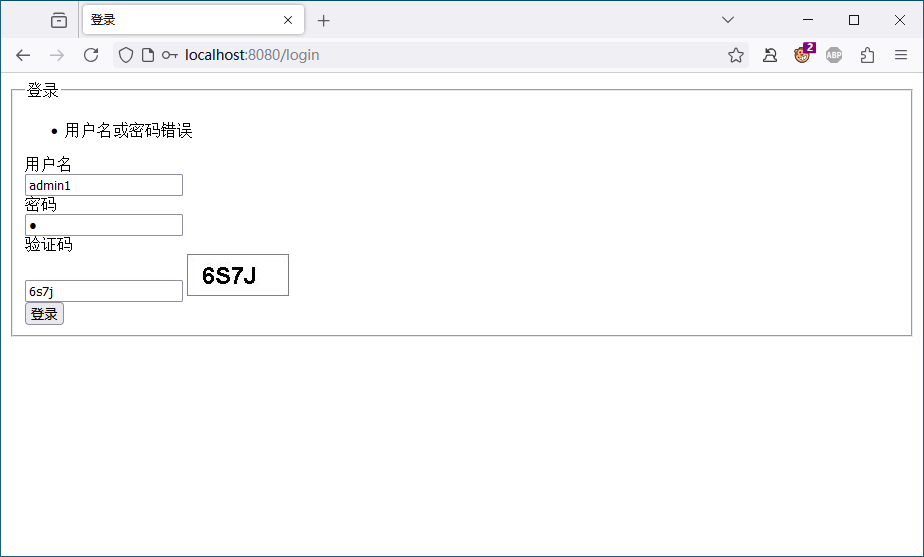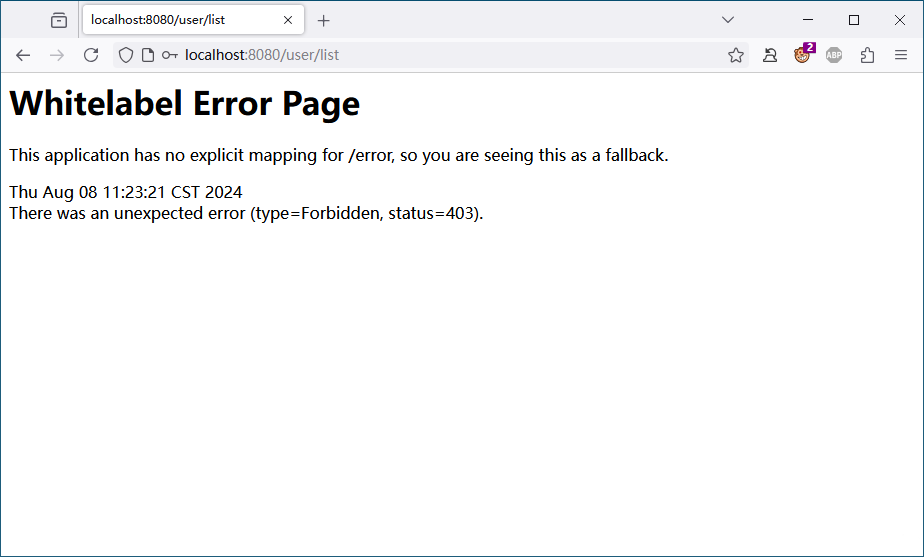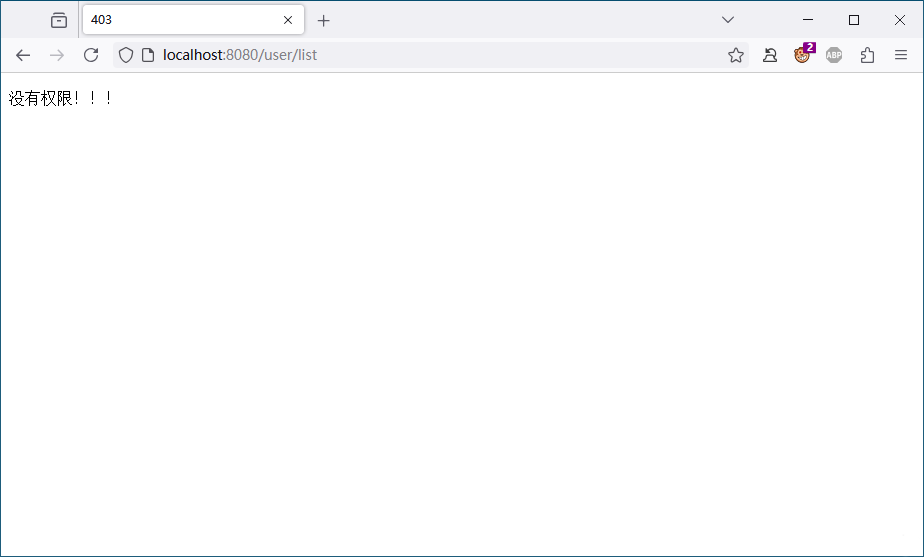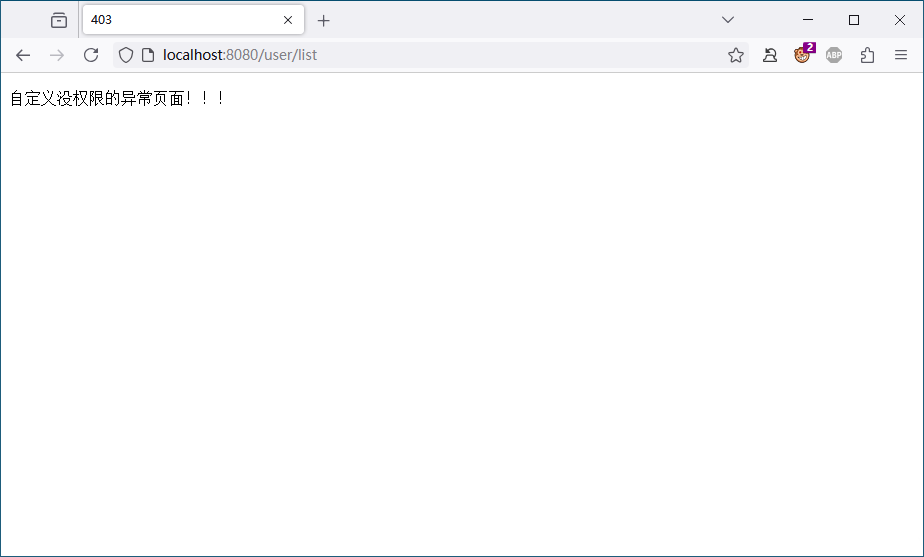除了利用框架内提供的默认异常处理,也可以自定义,实现 AuthenticationFailureHandler 接口即可
自定义认证失败处理
MyAuthenticationFailureHandler.kt
package com.example.springsecuritydemo.security
import jakarta.servlet.http.HttpServletRequest
import jakarta.servlet.http.HttpServletResponse
import org.springframework.security.core.AuthenticationException
import org.springframework.security.web.authentication.AuthenticationFailureHandler
import java.nio.charset.StandardCharsets
class MyAuthenticationFailureHandler : AuthenticationFailureHandler {
override fun onAuthenticationFailure(request: HttpServletRequest?, response: HttpServletResponse?, exception: AuthenticationException?) {
response?.setHeader("Content-Type", "text/html")
response?.characterEncoding = StandardCharsets.UTF_8.name()
request?.session?.setAttribute("loginpost_errors", exception?.message)
response?.sendRedirect("/login")
}
}
配置在 formLogin 里
formLogin {
// 登录页面(get请求)
loginPage = "/login"
// failureUrl没必要配置,框架默认将 loginPage+"?error"当成failureUrl
// failureUrl = "/login"
// 登录提交地址(post请求)
loginProcessingUrl = "/loginpost"
// 自定义异常处理
authenticationFailureHandler = MyAuthenticationFailureHandler()
// 默认登录成功跳转的地址
defaultSuccessUrl("/", true)
// 以上设置的两个地址(/login, /loginpost)全都直接放行,不需要权限
permitAll = true
}
效果

自定义权限验证异常处理
默认的没权限页面如下这样

可以看到非常的不好看,在配置httpSecurity时,还有一个 exceptionHandling 属性,可以给它配置一个403的页面
exceptionHandling {
accessDeniedPage = "/403.html"
}
csrf { disable() }
在 src/resources//static 里创建一个403.html页面
<!DOCTYPE html>
<html lang="en">
<head>
<meta charset="UTF-8">
<title>403</title>
</head>
<body>
<p>没有权限!!!</p>
</body>
</html>
别忘了将这个地址放行
authorizeHttpRequests {
authorize("/403.html", permitAll)
//...
}
使用 zhangsan 帐号登录,访问 /user/list

服务端渲染的页面这样就够了,但现在都喜欢前后端分离,所以自定义异常处理还是有必要的
创建 MyAccessDeniedHandler 类实现 接口 AccessDeniedHandler
package com.example.springsecuritydemo.security
import jakarta.servlet.http.HttpServletRequest
import jakarta.servlet.http.HttpServletResponse
import org.springframework.security.access.AccessDeniedException
import org.springframework.security.web.access.AccessDeniedHandler
import java.nio.charset.StandardCharsets
class MyAccessDeniedHandler : AccessDeniedHandler {
override fun handle(request: HttpServletRequest?, response: HttpServletResponse?, accessDeniedException: AccessDeniedException?) {
response?.setHeader("Content-Type", "text/html")
response?.characterEncoding = StandardCharsets.UTF_8.name()
response?.writer?.write(
"""
<!DOCTYPE html>
<html lang="en">
<head>
<meta charset="UTF-8">
<title>403</title>
</head>
<body>
<p>自定义没权限的异常页面!!!</p>
</body>
</html>
""".trimIndent()
)
response?.writer?.flush()
}
}
配置 httpSecurity里的exceptionHandling
exceptionHandling {
// accessDeniedPage = "/403.html"
accessDeniedHandler = MyAccessDeniedHandler()
}
测试效果如下

总结
- 如果网站是服务端渲染的话,用框架自带的异常处理就够了,如果是前后端分离的话,可以自定义,会更灵活